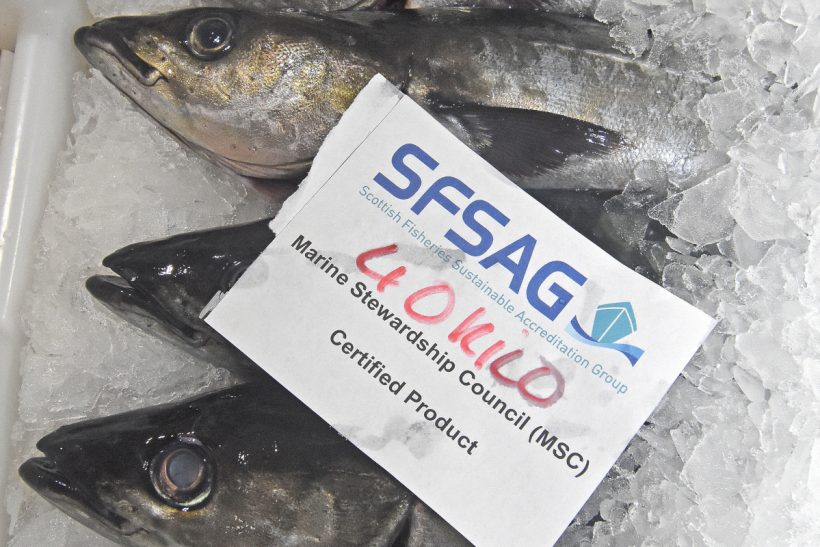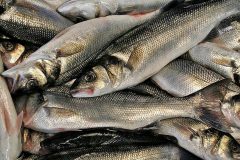23% cut to North Sea 2019 saithe TAC
Fears of chokes for some vessels and POs
An unexpected cut of nearly a quarter in the 2019 North Sea saithe quota is set to cause problems in the North Sea fishery, and increases the possibility of saithe becoming a choke species for some vessels and POs, reports Tim Oliver
The 23% cut is needed to rectify ‘a coding error’ by ICES in the 2019 stock assessment. Norway – which shares management of the stock with the EU – took the lead in taking the cut forward, which the Commission has agreed to.
The TAC for 2019 was set at 9,822t, a 16% increase on the 2018 TAC. The 23% cut will reduce the 2019 TAC to 7,563t – less than the 2018 TAC of 8,452t.
It is unusual for an in-year cut to a TAC to be made after it has been agreed at the December Council, although Baltic fishermen say they have experienced several in-year changes.
The issue was highlighted at a meeting last week of the North Sea Advisory Council, which discussed the state of play in the landing obligation, and the recommendations for 2020.
Saithe is a ‘Category 2’ potential choke species, which means that there should be enough quota in the overall system internationally to avoid any chokes – but it is not necessarily in the right place, and needs quota swaps and transfers to ensure everyone has enough quota for the year.
It is seen as a particular problem for the UK and Denmark. France has a big saithe quota that will be uncaught, but to arrange swaps or transfers, the receiving countries would need to find other quota ‘currency’ to swap. This will not be easy in the overall context of the landing obligation, where all quota is valuable.

An unexpected 23% cut in the 2019 North Sea saithe quota for which the SPSAG group hold MSC accreditation will cause widespread problems.
Barrie Deas, chairman of the North Sea Advisory Council’s demersal working group, who was at last week’s meeting, said the cut would cause ‘real problems’ in quota management.
“An in-year cut like this is very unusual, and destroys quota management planning. Vessels will have planned their fishing on the basis of their original saithe quota, and now suddenly find they have considerably less,” he told Fishing News.
“The landing obligation has amplified the problem because of the potential it raises for saithe to become a choke species for some vessels and POs in the North Sea fishery. It’s very difficult when vessels have planned on one basis, and then suddenly find they have to operate on another.
“France has a big saithe quota that will probably be uncaught, so it’s a case of moving quota around, making swaps and transfers so that we can acquire some of that quota.
“These days, it’s mainly done through quota swaps and transfers, but that all depends on having currency in terms of other quotas to swap, and member states have become reluctant to make transfers because of relative stability fears.
“There are also administrative redistribution problems. If the Commission were to intervene, that kind of undermines the market, the way things are done. That’s why the Commission has agreed to the cut so promptly – it thinks there’s enough quota in the system to go round, and says it’s not its fault if the member states can’t get their act together and sort it out.”
Barrie Deas said that when member states discussed the problem of Category 2 chokes last year, they agreed they wouldn’t do anything to undermine relative stability.
“They wanted to see how things went in the new year, see how serious chokes would be, where they would appear, what could be done about them – so I imagine there’ll be discussion among the member states to try and get some quota across.”
He said that member states’ frustrations over Brexit inevitably ‘bleed into other areas’, although officials had said the Commission had behaved ‘impeccably’ towards the UK in honouring fisheries agreements despite Brexit.
“They aren’t treating us as second-class citizens, but the member states are less receptive to UK requests, whereas previously they have usually been willing to try to resolve problems.”
‘Widespread chokes already, without the exemptions’
The NSAC demersal working group looked at the recommendations from the joint North Sea and Western Waters groups on discards ban policy for 2020.
There was a focus on the de minimis and high-survivability exemptions to the ban, which Barrie Deas said had been ‘absolutely essential’ in mitigating the potential of chokes.
“If you didn’t have those exemptions, you would be having widespread chokes at the moment – to quite a significant extent, the exemptions have mitigated the potential for chokes.
“It’s quite difficult to foresee where chokes will arise. Here’s an example where there’s a species with the potential to choke, but it appeared it wouldn’t manifest itself this year – but then you get a 23% cut that creates difficulties for some vessels.”
Work to avoid choke species
Work is continuing to minimise the risk of choke species closing fisheries early, with the landing obligation/discards ban now fully in force for all quota species, reports Tim Oliver.
Seafish’s Discards Action Group (DAG) heard a roundup of the situation to date from DEFRA policy officer Heidi Guille, who said that there is increasing engagement with the industry on a number of fronts.
A landing obligation forum has been created with the catching sector, and targeted consultations with fishermen are taking place in specific regions, as well as meetings with retailers, processors and environmental NGOs.
Fisheries administrations have set up reserve pools of quota for some species. This will allow fishermen to count undersized and unwanted fish they have to land against these government pools, rather than against their own vessel quotas (Fishing News, 28 March, ‘Discards quota pools’).
The policy aims to help to avoid choke risks, and encourage more sustainable fishing through the use of more selective gear. It will also help the inshore fleet.
This quota comes from ‘uplift’ quota – the amount added on to TACs to reflect the fish that was discarded, but must now be landed. Until this year, the Commission showed the uplift quota as a separate amount, but this year, there is just a single TAC figure. DEFRA has calculated the uplift amount based on 2018 discard rates to create the reserve quotas.
There is no reserve quota for fisheries where there is a zero TAC, such as Celtic Sea cod and Irish Sea whiting, as these species are subject to other arrangements agreed at the December Council in 2018. Work is underway on by-catch reduction plans for these species.
“We have, so far, started consultation with industry in the South West to try to tie together the need for by-catch reduction plans with other policy measures such as reserve quota, so a coherent approach is taken,” Heidi Guille told the group.
“The South West consultation was very positive, and generated a number of ideas on selectivity improvements and evidence gathering.”
There is also no reserve quota where the discard rate is 0%, or there is no known discard rate, for species where there is full exemption from the landing obligation, and where the stock is managed at UK level.
The ‘top-slicing’ of the first 100t, and 10% thereafter, of quota uplift to benefit the under-10m and non-sector fleet will continue for all eligible stocks, although a reduced top-slice is applied to some stocks.
Policy also aims to incentivise more sustainable fishing through encouraging the use of highly selective gears and participation in fully documented fisheries, supporting the inshore fleet and gathering evidence.
Policy on international quota swaps is also an important element in the ongoing work towards avoiding choke risks, but this has been affected by planning for a no-deal Brexit. If that happened, UK fisheries would have no automatic access to international quota swaps.
“Across fisheries administrations, we have also been considering the implications of requests for international quota swaps (IQS) in the light of current choke threats,” said Heidi Guille.
“We are currently engaging industry on principles that would underpin the decision to prevent an IQS from happening, and a list of stocks it might apply to, where it is in the national interest to do so. The intention is to prevent exacerbation of critical choke risks.”
Mike Park, chief executive of the Scottish White Fish Producers’ Association, told the DAG that full implementation was now ‘firmly in place’, and the fleet understood its responsibilities.
He said that industry and the fishery regulators were discussing ways to fish smarter. These included increasing skippers’ awareness of spatial and temporal considerations when fishing, sharing of information, continuing trials, and new regulatory measures such as increased size and use of square-mesh panels.
He added that reductions in TACs in 2019 for key commercial species had added ‘an unhelpful pressure’.






